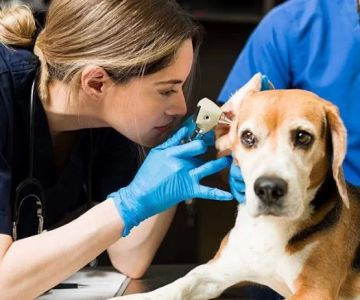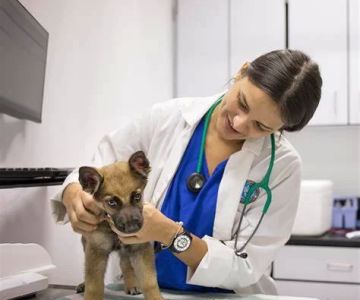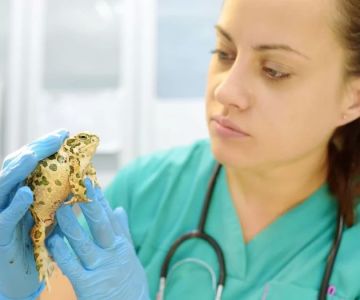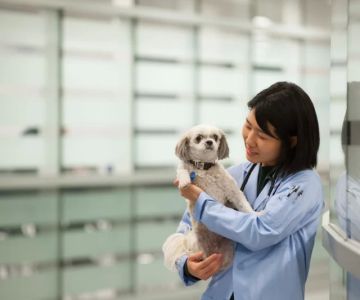- 1 - Presence-of-Medical-Doctors-in-Veterinary-Medical-Schools
- 2 - Roles-and-Expertise-of-Medical-Doctor-Faculty-in-Veterinary-Schools
- 3 - Benefits-of-Interdisciplinary-Teaching-in-Veterinary-Medical-Education
- 4 - Case-Studies-of-Medical-Doctors-Teaching-at-Veterinary-Medical-Schools
- 5 - Collaborative-Education-Between-Human-and-Veterinary-Medicine
- 6 - Future-Trends-in-Veterinary-Medical-Education-and-md-involvement
1. Presence of Medical Doctors in Veterinary Medical Schools
When asking, are there medical doctors that teach at veterinary medical schools? the answer is yes, though their presence varies across institutions. Many veterinary schools employ faculty members who hold MD degrees, either solely or alongside veterinary qualifications. These medical doctors contribute their unique expertise in human medicine, pathology, pharmacology, and other biomedical sciences, enriching the veterinary curriculum.
Such interdisciplinary involvement is increasingly common in leading veterinary institutions worldwide. The integration of medical doctors as instructors or researchers helps bridge gaps between human and animal health, fostering a One Health approach that acknowledges the interconnectedness of all species.
2. Roles and Expertise of Medical Doctor Faculty in Veterinary Schools
Medical doctors teaching in veterinary schools often bring specialized knowledge in anatomy, physiology, infectious diseases, and pharmacology. Their roles include lecturing, mentoring, leading research projects, and developing interdisciplinary coursework. Some MDs serve as joint faculty members holding dual appointments, reflecting their active engagement in both human and veterinary medical fields.
This dual expertise is particularly valuable in comparative medicine, where studying disease mechanisms across species offers insights into treatments and prevention strategies. For example, MDs with backgrounds in oncology or immunology may guide veterinary students in understanding cancer or autoimmune diseases in animals, drawing parallels to human cases.
3. Benefits of Interdisciplinary Teaching in Veterinary Medical Education
The collaboration between medical doctors and veterinary faculty enhances the educational experience by introducing broader perspectives and diverse methodologies. Interdisciplinary teaching promotes critical thinking and encourages students to consider complex biological systems holistically.
Veterinary students gain deeper understanding when exposed to human medical advances, which often inform veterinary practices. This synergy helps prepare graduates to address zoonotic diseases and emerging health threats effectively. Moreover, it cultivates a culture of cooperation between human and veterinary healthcare professionals, improving public health outcomes.
4. Case Studies of Medical Doctors Teaching at Veterinary Medical Schools
One notable example includes Dr. Laura Thompson, an MD specializing in infectious diseases, who lectures at a prominent veterinary school. Her courses on zoonoses and epidemiology integrate clinical insights from both human and animal health, providing students with comprehensive knowledge essential for tackling diseases like rabies or influenza.
Another case is the involvement of MD researchers in veterinary oncology programs, where cross-species studies on cancer treatments have accelerated breakthroughs benefiting both humans and animals. These stories demonstrate the tangible impact of MD faculty on veterinary education and research.
5. Collaborative Education Between Human and Veterinary Medicine
The growing trend of One Health initiatives underlines the necessity of collaboration between medical doctors and veterinarians. Joint seminars, shared research centers, and interdisciplinary projects are increasingly common, supported by faculty teams composed of both MDs and DVMs.
This collaborative model not only enriches learning but also prepares students to work in integrated healthcare environments, a critical need as global health challenges become more complex and interconnected.
6. Future Trends in Veterinary Medical Education and MD Involvement
Looking forward, the role of medical doctors in veterinary medical schools is expected to expand. Advances in biotechnology, precision medicine, and digital health demand a cross-disciplinary approach to training the next generation of veterinary professionals.
Institutions are increasingly hiring MDs with specialized expertise to co-develop curricula and lead innovative research, ensuring veterinary education keeps pace with rapid scientific progress. For students and educators alike, this evolution offers exciting opportunities for growth and collaboration.
For those interested in exploring interdisciplinary approaches or pursuing resources related to veterinary medical education, our platform provides curated materials and expert recommendations. Embracing the knowledge of medical doctors in veterinary schools not only enriches learning but also drives innovation that benefits both human and animal health. Discover more about this dynamic educational landscape and consider how integrating diverse expertise can elevate your academic and professional journey.












